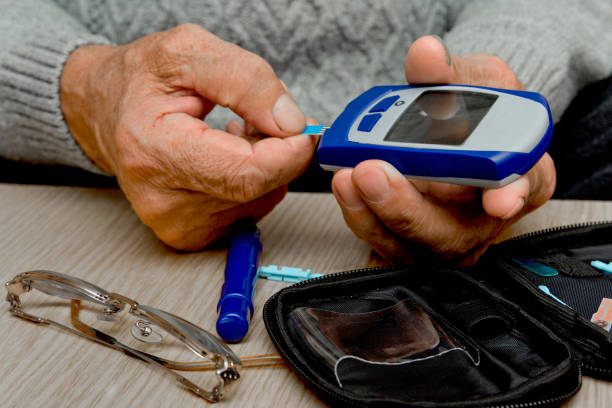The Rising Epidemic: Understanding Type 2 Diabetes
Type 2 diabetes is a growing public health crisis impacting millions of people worldwide. This chronic metabolic disorder, characterized by high blood sugar levels due to insulin resistance, has reached epidemic proportions, cutting lives short and diminishing quality of life for those affected. With rates continuing to climb at an alarming pace, it’s more important than ever to understand type 2 diabetes, the key risk factors, potential complications, preventive measures, and effective management strategies.
What is Type 2 Diabetes?
Type 2 diabetes is the most common form of diabetes, making up an estimated 90% of all diabetes cases globally. It occurs when the body becomes resistant to insulin, a hormone produced by the pancreas that helps regulate blood sugar levels. Over time, the pancreas may not be able to produce enough insulin to compensate.

This insulin resistance causes glucose (blood sugar) to build up in the bloodstream rather than being absorbed by cells for energy. Sustained high blood sugar levels can lead to serious health consequences affecting nearly every major system in the body. That’s why keeping blood sugar within the recommended target range through proper treatment is so crucial for managing type 2 diabetes.
Who is at Risk?
While type 2 diabetes can develop at any age, even during childhood, it most commonly arises in adulthood. Several key risk factors increase one’s likelihood of developing this condition:
- Overweight/Obesity: Being overweight or obese is the single greatest risk factor for type 2 diabetes. Excess body fat, especially around the abdomen, is linked to insulin resistance.
- Inactivity: Leading a sedentary lifestyle with little to no physical activity can greatly raise your diabetes risk. Exercise helps cells better utilize insulin.
- Family History: Having an immediate family member such as a parent or sibling with type 2 diabetes increases your risk due to genetic factors.
- Race and Ethnicity: Type 2 diabetes is more prevalent among certain racial/ethnic groups like African American, Hispanic/Latino, American Indian, Pacific Islander, and some Asian communities.
- Prediabetes: Having prediabetes means blood sugar levels are higher than normal but not high enough for a type 2 diabetes diagnosis. Without intervention, many people with prediabetes progress to type 2.
- Polycystic Ovary Syndrome (PCOS): Women with polycystic ovarian syndrome have higher rates of insulin resistance and type 2 diabetes.
- Increasing Age: The pancreas can become less efficient at producing adequate insulin as we get older, especially after age 45.
Other potential risk factors include high blood pressure, abnormal cholesterol levels, gestational diabetes during pregnancy, and smoking. Many of these risk factors are modifiable through healthy lifestyle changes.
Complications of Type 2 Diabetes
If left uncontrolled or improperly managed, type 2 diabetes can lead to a number of serious or even life-threatening complications over time. Potential complications include:
- Heart Disease and Stroke: People with type 2 diabetes face a much higher risk of developing various cardiovascular disorders including heart disease, heart attacks, strokes, and atherosclerosis.
- Nerve Damage (Neuropathy): High blood sugar can injure small blood vessels that nourish the nerves, causing numbness, tingling, burning, and eventual nerve damage known as diabetic neuropathy.
- Kidney Disease: Diabetes is the leading cause of kidney disease and kidney failure. Over time, uncontrolled blood sugar can damage the kidneys’ filtering system.
- Eye Disease and Vision Loss: Diabetic retinopathy, caused by damage to blood vessels in the eyes from high blood sugar, is the leading cause of blindness in working-age adults.
- Lower Limb Amputations: Poor blood flow and nerve damage increase the risk of unhealed foot sores/ulcers which can lead to amputation of toes, feet, or lower legs.
- Skin Conditions: Bacterial and fungal infections are more common in people with type 2 diabetes due to factors like poor circulation and suppressed immune function.
- Cognitive Impairment: Type 2 diabetes has been linked to accelerated cognitive decline and an increased risk of conditions like Alzheimer’s disease and dementia.
The good news is that by properly managing blood sugar levels, eating a healthy diet, exercising regularly, and taking medications as prescribed, it’s possible to prevent or delay many of these potential complications from developing.
Preventive Lifestyle Measures
While some risk factors for type 2 diabetes like genetics and increasing age can’t be changed, making proactive healthy lifestyle choices can have a major impact in terms of prevention. Doctors recommend:
Weight Management: Achieving and maintaining a healthy body weight through diet and regular physical activity is one of the most powerful ways to prevent or delay the onset of type 2 diabetes. Even modest weight loss can improve insulin sensitivity and lower blood sugar levels.
Balanced, Nutritious Diet: Eating a balanced diet full of vegetables, fruits, whole grains, lean protein sources, and healthy fats can lower diabetes risk, control blood sugar, and promote an overall healthier body weight. Limit highly processed foods, sugary drinks, and foods high in saturated and trans fats.
Regular Physical Activity: Regular exercise helps muscles better utilize insulin and keeps blood sugar levels in a safer range. Aim for 30-60 minutes of physical activity like brisk walking, swimming, or cycling most days of the week.
Not Smoking: Smokers have a significantly higher risk of developing type 2 diabetes compared to non-smokers. Quitting smoking can reduce this increased risk over time.
Moderate Alcohol Intake: Excessive alcohol consumption can worsen blood sugar control and increase diabetes risk. Men should have no more than two drinks per day, and women no more than one.
Adequate Sleep: Getting enough quality sleep is another important lifestyle factor. Lack of sleep has been linked to increased insulin resistance and elevated diabetes risk.
Stress Management: High levels of stress can disrupt blood sugar regulation and promote unhealthy behaviors like overeating and inactivity. Managing stress through exercise, hobbies, meditation, etc. is advisable.
Even if diabetes does develop, these healthy habits can help manage the condition alongside medication and other treatments. It’s never too late to adopt a healthier lifestyle!
Treatment and Management Strategies
While there is no cure for type 2 diabetes yet, it’s a very manageable condition with proper treatment and lifestyle management. A combination of strategies is often deployed:
Medications: Several types of oral or injected medications are used to help lower blood sugar levels, such as metformin, SGLT2 inhibitors, DPP-4 inhibitors, GLP-1 receptor agonists, insulin, and others. Medications often need to be adjusted over time.
Insulin Therapy: Some patients may need insulin, either alone or combined with other medications, to keep blood sugar within their target range. Insulin has to be injected or delivered via an insulin pump.
Blood Sugar Monitoring: Regularly checking blood sugar levels using a glucose meter allows for better management by knowing when levels are too high or too low and dosing medication accordingly.
Nutrition and Meal Planning: Following a diabetic-friendly diet focused on nutrient-dense foods with plenty of fiber and lean protein is key. Meeting with a registered dietitian nutritionist can help develop an optimal meal plan.
Exercise: Regular, consistent physical activity like brisk walking, swimming, biking, or resistance training can boost insulin sensitivity and lower blood sugar levels, making it an essential component of any type 2 diabetes management plan.
Weight Management: For overweight and obese individuals with type 2 diabetes, even modest weight loss through diet and exercise can substantially improve blood sugar control and reduce complications.
Blood Pressure/Cholesterol Control: Treating high blood pressure and abnormal cholesterol levels, which often co-occur with diabetes, is crucial to reduce the risk of heart disease and stroke.
Alcohol/Smoking Cessation: Avoiding excessive alcohol intake and quitting smoking are recommended lifestyle interventions.
Foot Care: Due to the risk of poor circulation, nerve damage, and slow-healing wounds, daily foot checks, proper footwear, and routine foot exams with a doctor are advised.

Managing Stress: Learning stress management techniques like meditation, yoga, massage, and therapy can prevent stress from adversely impacting blood sugar levels.
Being an active, informed partner in your own care is essential with type 2 diabetes. Closely following your doctor’s prescribed treatment plan, taking medications as directed, self-monitoring blood sugar levels, and making sustainable lifestyle changes are all vital steps toward successfully managing the condition and preventing serious complications.
Conclusion
Type 2 diabetes is a growing health crisis driven largely by obesity, poor diets, and sedentary lifestyles. However, it doesn’t have to be an inevitability. This chronic condition is largely preventable by maintaining a healthy, active lifestyle and achieving a normal body weight. For those living with type 2 diabetes, there are more treatment options available than ever before to help control blood sugar levels and prevent or delay the onset of serious complications.
With early diagnosis, effective medication management, regular exercise, a balanced diabetic-friendly diet, careful monitoring of blood sugar levels, and committed self-care, it’s entirely possible to live a long, full life with type 2 diabetes. Equipping yourself with knowledge about this condition and working closely with a quality diabetes care team is key to successfully managing it. By focusing on prevention and proactively making healthy lifestyle choices, we can turn the tide against the rising epidemic of type 2 diabetes.